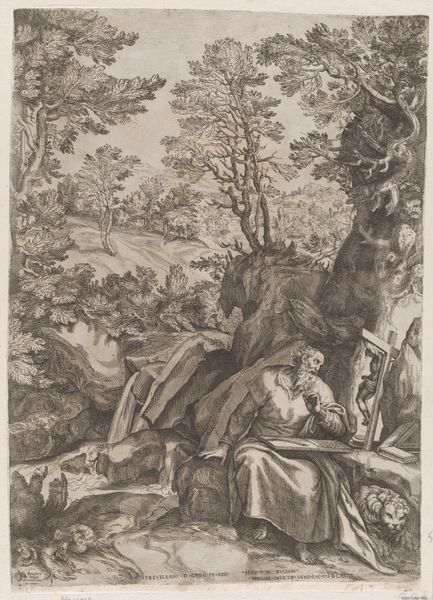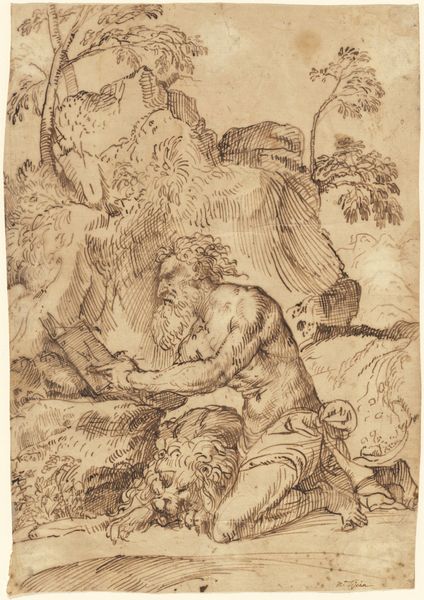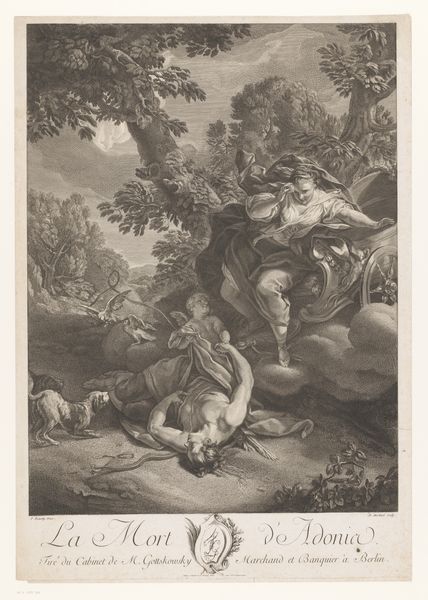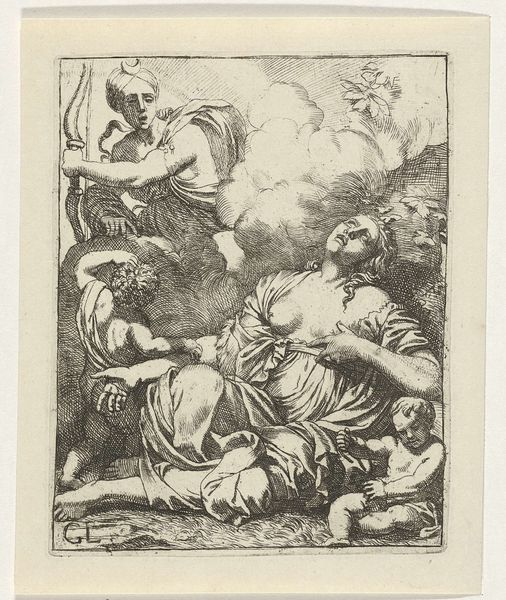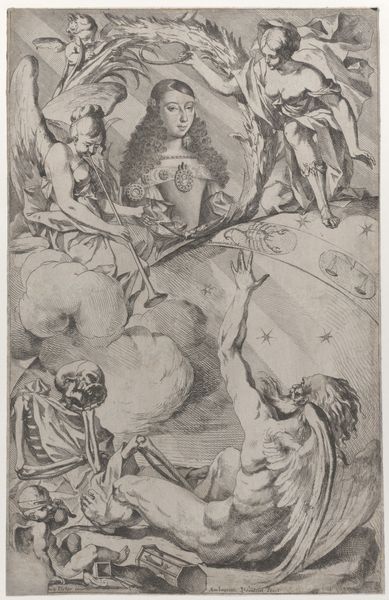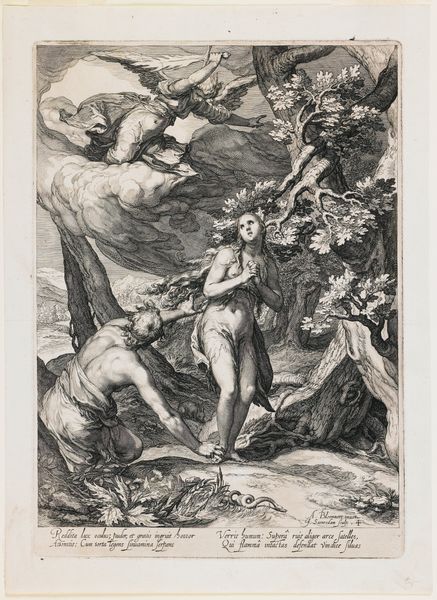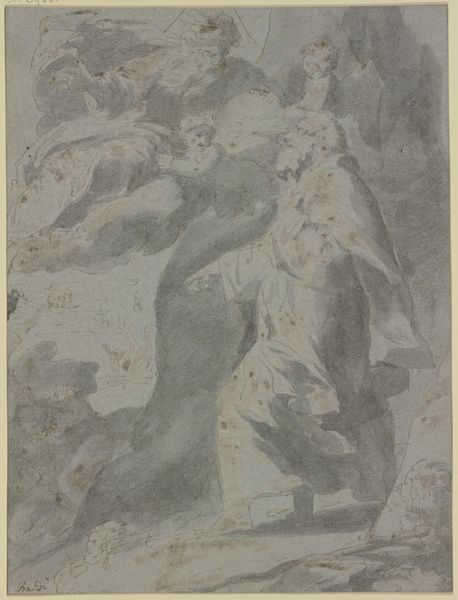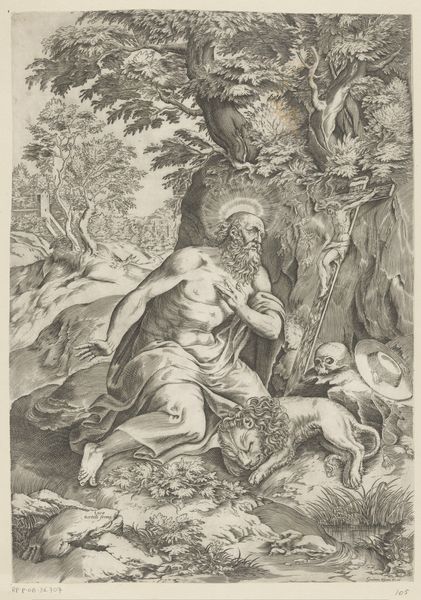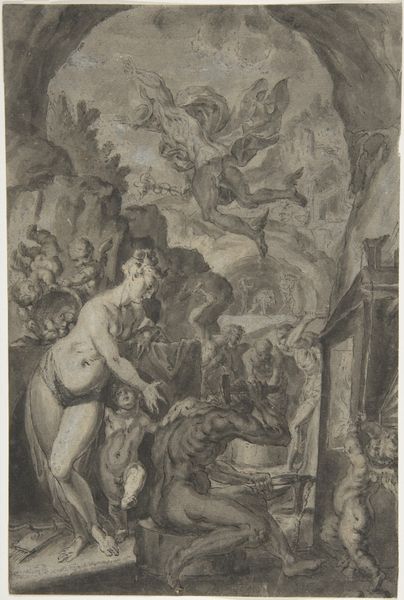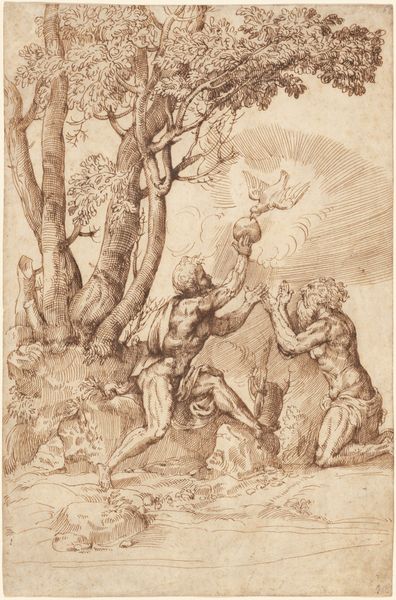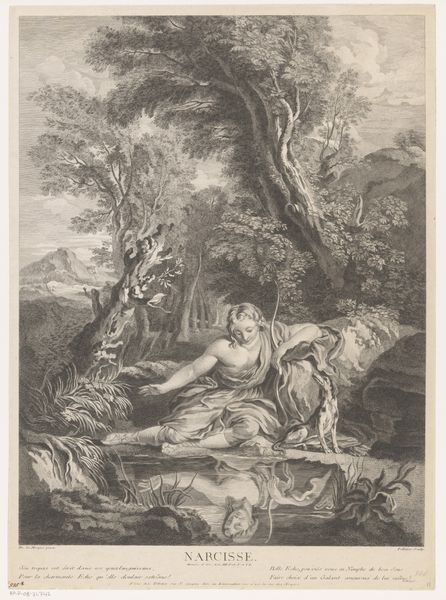
A lion atop a fallen horseman at right, with two other soldiers at left 1640 - 1670
0:00
0:00
print, engraving
#
baroque
# print
#
charcoal drawing
#
figuration
#
history-painting
#
engraving
Dimensions: Sheet (Trimmed): 15 3/8 × 10 3/8 in. (39 × 26.3 cm)
Copyright: Public Domain
Editor: We are looking at “A lion atop a fallen horseman at right, with two other soldiers at left,” an engraving by Giovanni Battista Bonacina from the mid-17th century. The scene feels both brutal and strangely tender with that lion. I’m intrigued by the details, like the fallen shield. What story do you think the materials and techniques tell us? Curator: It’s crucial to understand this engraving through the lens of its production. Consider the socio-economic status of the engraver, and the labour required for this image, a print to be circulated. The material process itself is revealing. The controlled lines etched into the copperplate and then pressed onto paper; it allowed Bonacina's imagery to spread. Doesn't the scene of fallen soldiers, the "lion’s embrace" suggest more about the material realities of 17th-century warfare, where soldiers are reduced to resources and raw material for displays of power? Editor: I never thought about it in that way. I see it as history, myth maybe. But, thinking about it as something made for mass production – a physical object showing the spoils of physical combat. Curator: Exactly! Ask yourself, who would buy and circulate these engravings? Were they for scholars, political commentators, or merely for decoration by the wealthy? These material considerations provide a window into the economic power structures that funded Bonacina’s practice. Consider the historical events it depicts - this imagery circulated alongside tangible realities of battlefields, resources extracted for the war machine... Does this not bring forth other meanings of the original context and purpose? Editor: It definitely changes how I perceive the power dynamics portrayed. I’m also curious: what’s the connection to earlier works or even classical sources that informed Bonacina’s approach to his work? I guess thinking through this lens gives another viewpoint when encountering works of art in the museum. Curator: Understanding that interplay between production, historical reference, and reception gives us a much richer understanding of this print.
Comments
No comments
Be the first to comment and join the conversation on the ultimate creative platform.

